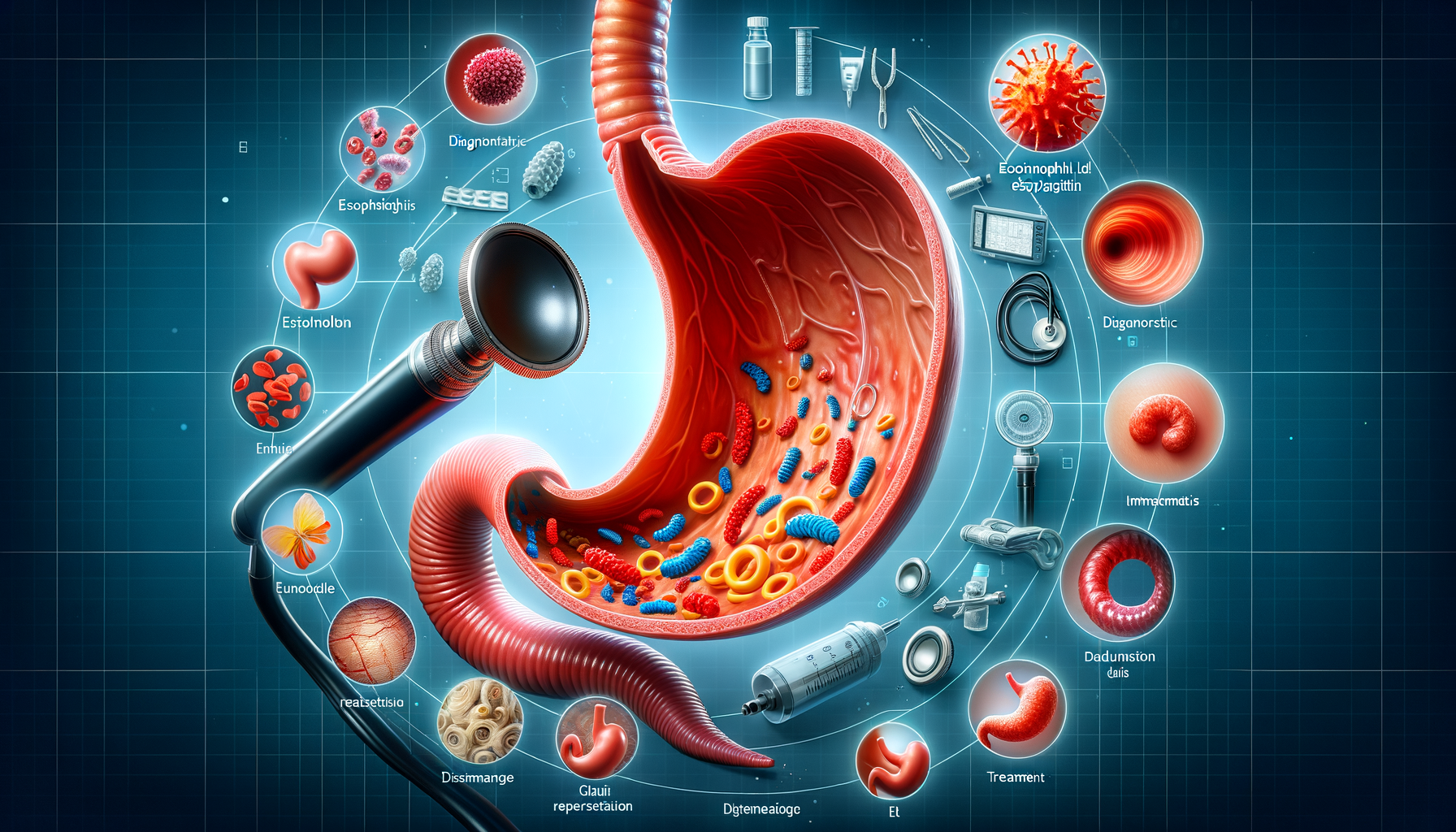Introduction to Eosinophilic Esophagitis
Eosinophilic Esophagitis (EoE) is a chronic, immune-mediated esophageal disorder characterized by the presence of a high number of eosinophils, a type of white blood cell, in the esophagus. This condition can lead to inflammation and damage to the esophageal tissue, causing symptoms such as difficulty swallowing, food impaction, and heartburn. Understanding EoE is crucial as it is often underdiagnosed due to its symptoms overlapping with other gastrointestinal disorders.
The importance of recognizing EoE lies in its impact on quality of life and the potential for long-term esophageal damage if left untreated. As awareness of this condition grows, healthcare providers are better equipped to diagnose and manage EoE, improving outcomes for patients. In this article, we explore the diagnosis and treatment of EoE, providing a comprehensive guide for those affected by this condition.
Diagnosing Eosinophilic Esophagitis
Diagnosing EoE involves a combination of clinical evaluation, endoscopy, and histological examination. The process begins with a thorough medical history and assessment of symptoms. Common symptoms include dysphagia (difficulty swallowing), food impaction, and chest pain, which can be mistaken for gastroesophageal reflux disease (GERD). Due to this overlap, a careful differential diagnosis is essential.
An endoscopy is typically performed to visually inspect the esophagus for signs of EoE, such as rings, furrows, or white exudates. During this procedure, biopsies are taken from the esophageal lining to assess the presence of eosinophils. A count of more than 15 eosinophils per high-power field in the tissue samples is indicative of EoE.
Other diagnostic tools include allergy testing to identify potential food triggers and esophageal manometry to evaluate esophageal motility. These tests help differentiate EoE from other conditions and guide treatment decisions. Accurate diagnosis is vital for effective management, as untreated EoE can lead to complications such as esophageal strictures and fibrosis.
Treatment Approaches for Eosinophilic Esophagitis
Treating EoE involves a multi-faceted approach that includes dietary management, pharmacotherapy, and in some cases, endoscopic intervention. Dietary management is often the first line of treatment, focusing on elimination diets to identify and remove food allergens that trigger eosinophilic inflammation. The six-food elimination diet (SFED), which excludes dairy, wheat, eggs, soy, nuts, and seafood, is commonly used.
Pharmacotherapy options include proton pump inhibitors (PPIs), which can reduce esophageal inflammation in some patients, and topical corticosteroids, such as budesonide or fluticasone, which are swallowed to directly target the esophagus. These medications help reduce eosinophil levels and alleviate symptoms.
In severe cases where strictures or significant narrowing of the esophagus occur, endoscopic dilation may be necessary to improve swallowing function. This procedure involves gently stretching the esophagus to relieve obstruction. Long-term management of EoE requires regular monitoring and adjustments to treatment plans based on symptom control and endoscopic findings.
Challenges in Managing Eosinophilic Esophagitis
Managing EoE presents several challenges, primarily due to its chronic nature and the need for ongoing treatment. One of the key challenges is adherence to dietary restrictions, which can be difficult for patients, especially children. Ensuring adequate nutrition while eliminating potential allergens requires careful planning and support from dietitians.
Another challenge is the variability in response to treatment. While some patients achieve symptom control with dietary changes or medications, others may require a combination of therapies or experience relapses. This variability necessitates a personalized approach to treatment, with regular follow-up to assess efficacy and make necessary adjustments.
Furthermore, there is a need for increased awareness and education about EoE among healthcare providers and the general public. Misdiagnosis or delayed diagnosis can lead to prolonged suffering and complications. Continued research into the mechanisms of EoE and the development of novel therapies is essential to improve patient outcomes.
Conclusion: Navigating Eosinophilic Esophagitis
Eosinophilic Esophagitis is a complex condition that requires a comprehensive approach to diagnosis and treatment. By understanding the symptoms, diagnostic procedures, and treatment options, patients and healthcare providers can work together to manage this condition effectively. Early diagnosis and intervention are crucial in preventing long-term complications and improving quality of life.
For those living with EoE, it is important to maintain open communication with healthcare providers and adhere to treatment plans. Support from healthcare teams, including allergists, gastroenterologists, and dietitians, plays a vital role in managing EoE successfully. As research continues to advance, there is hope for more targeted therapies that can provide relief for those affected by this condition.




Leave a Reply